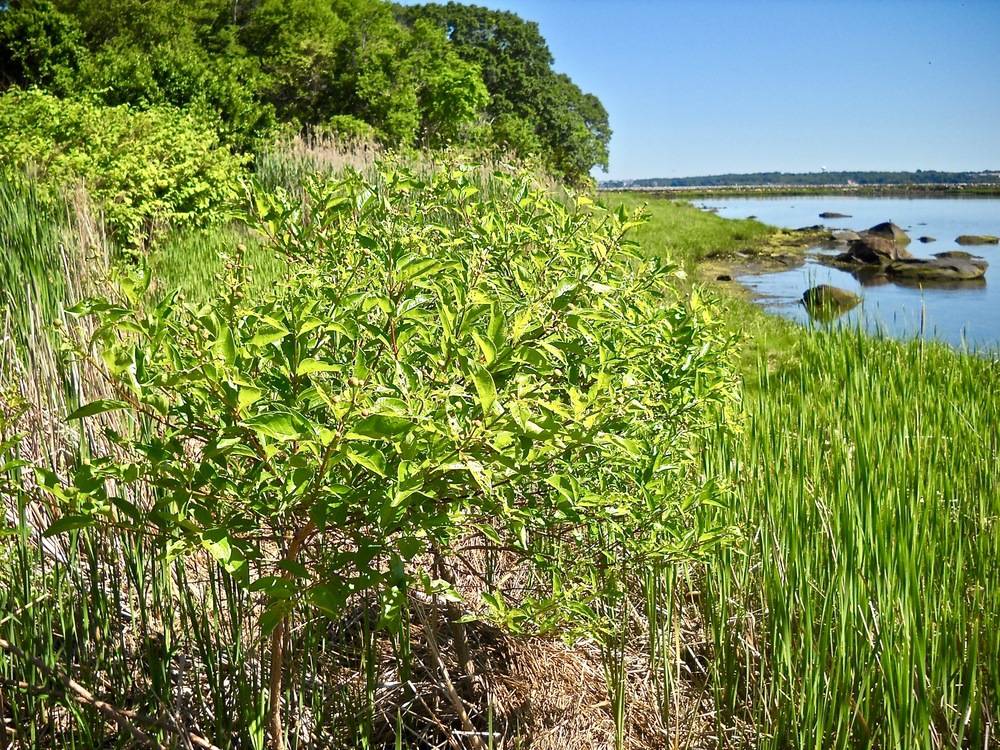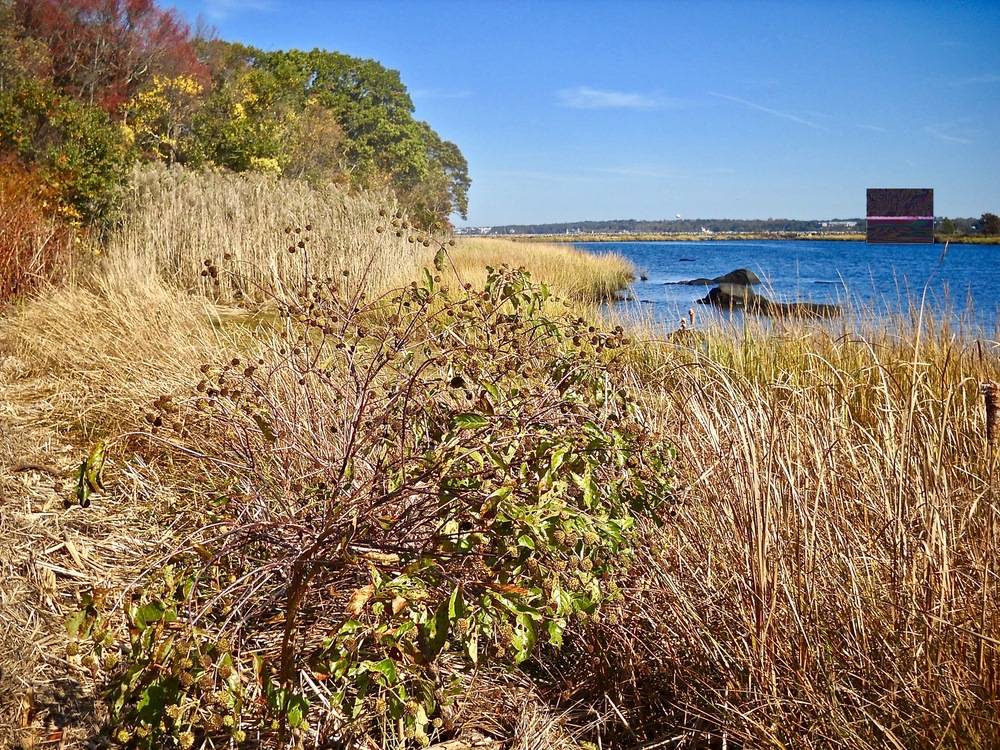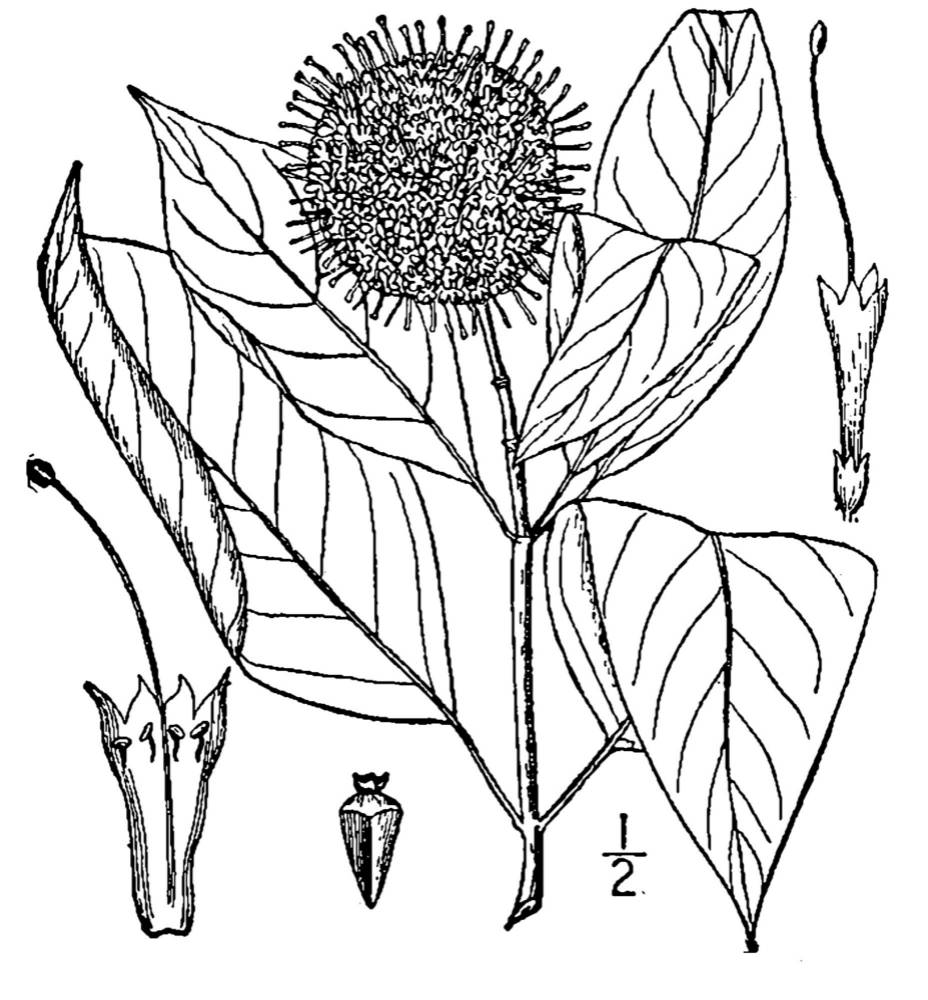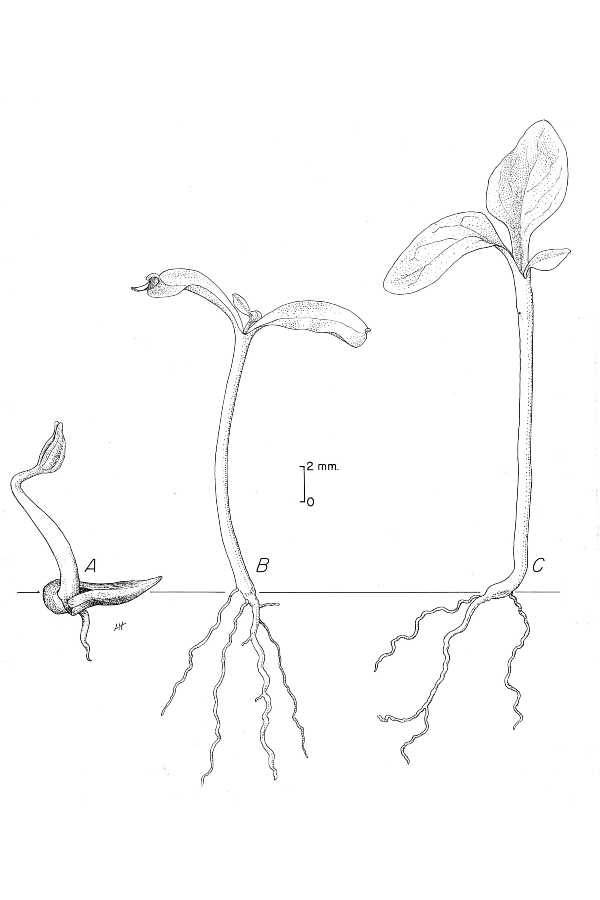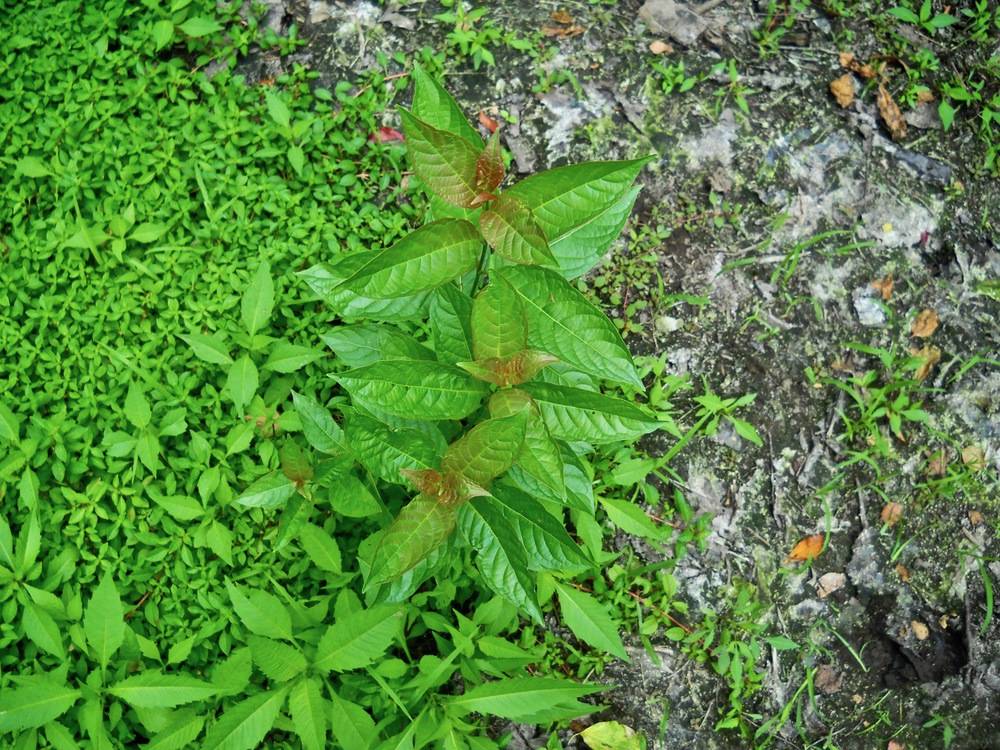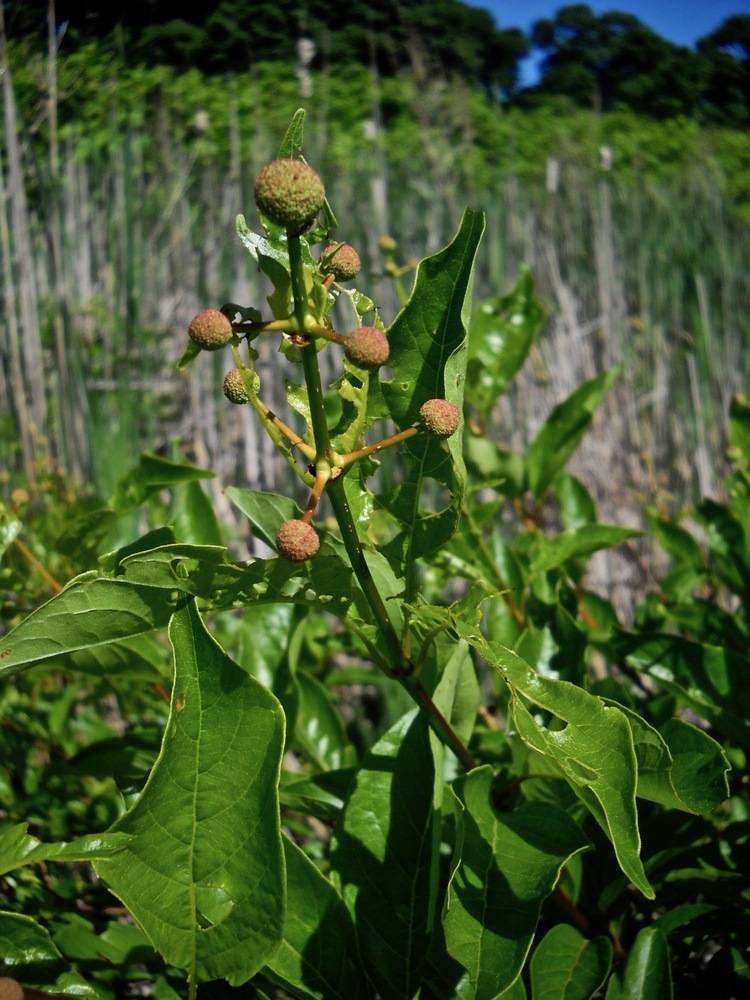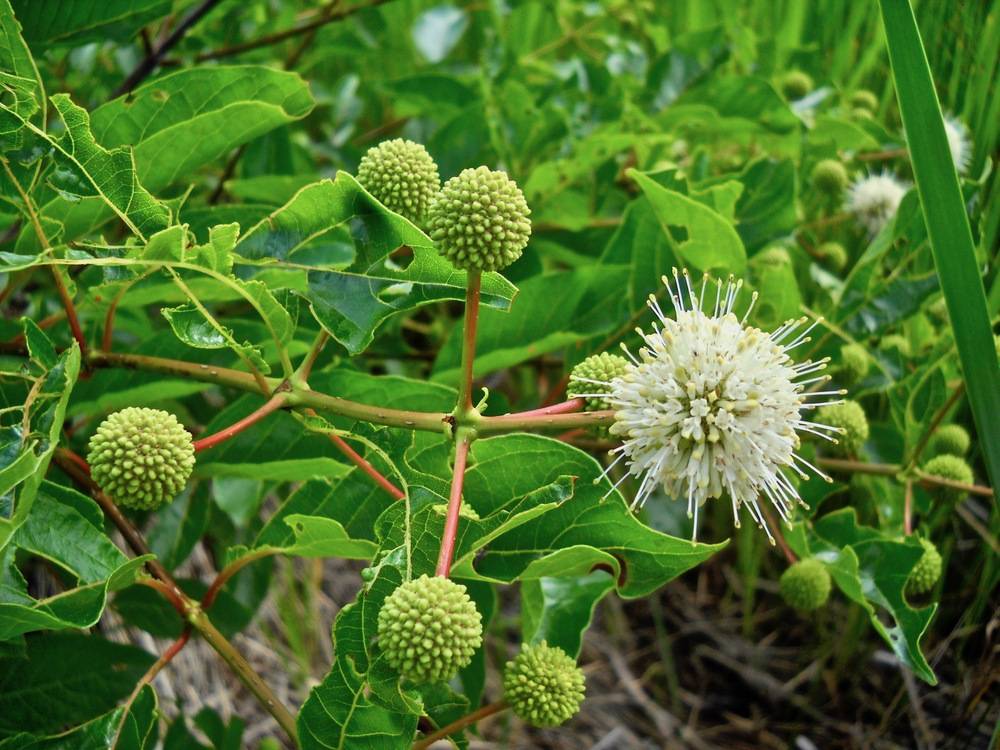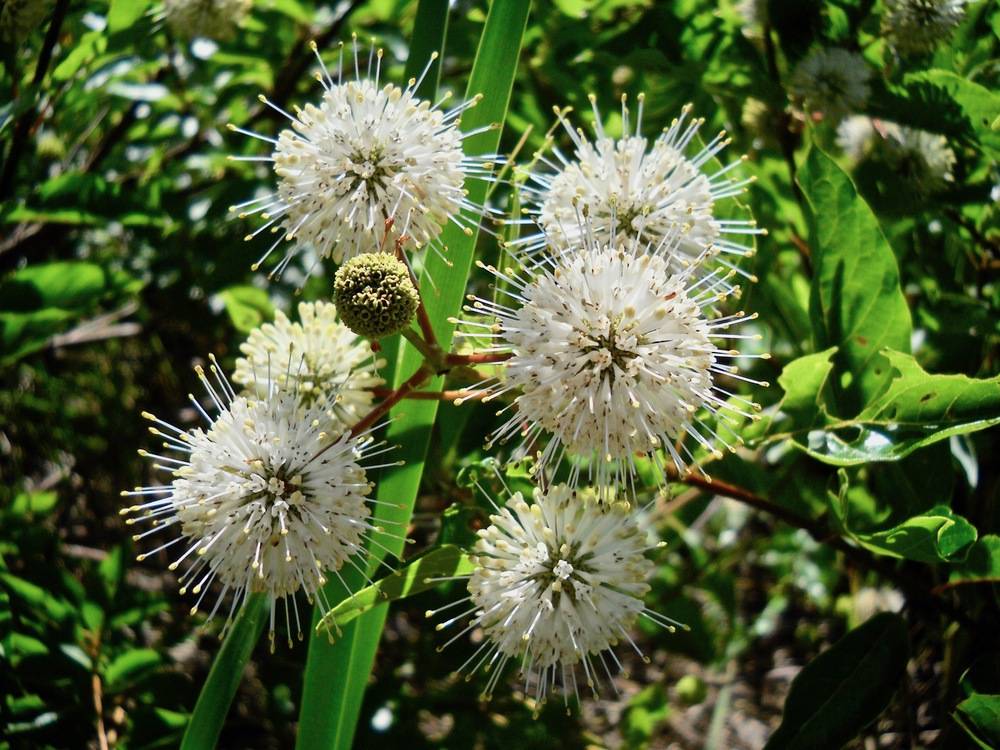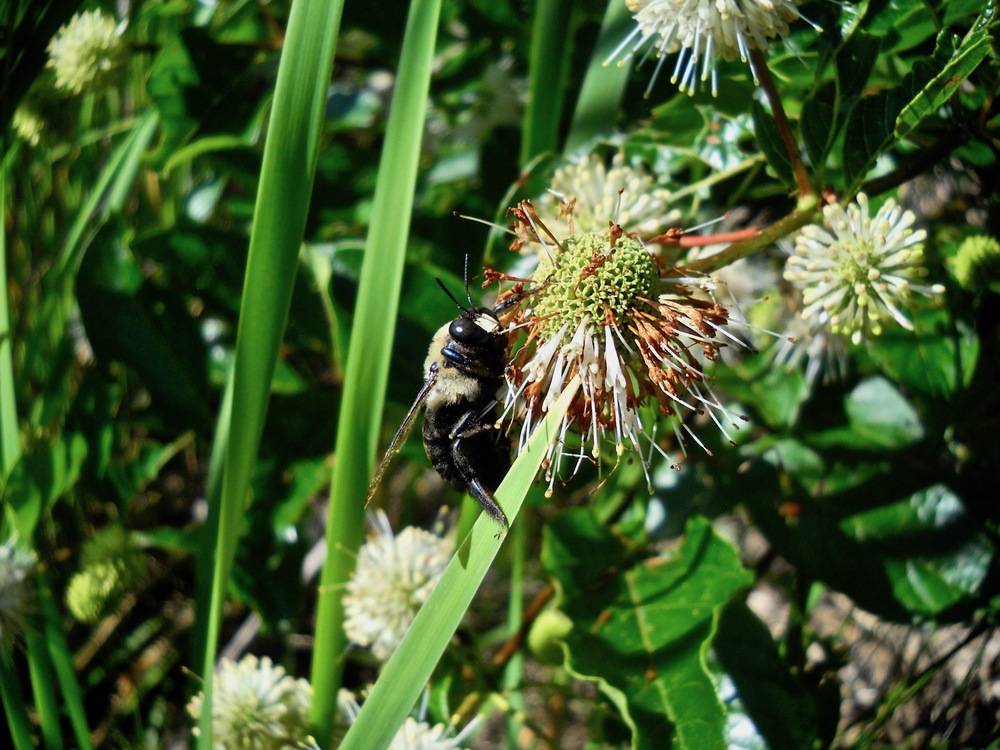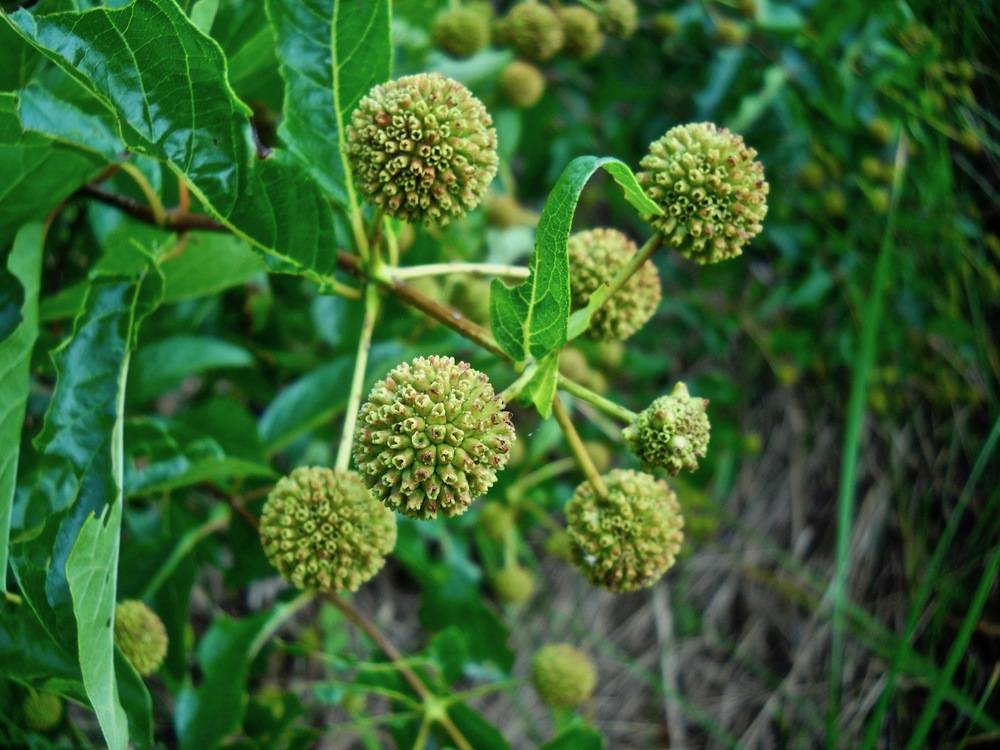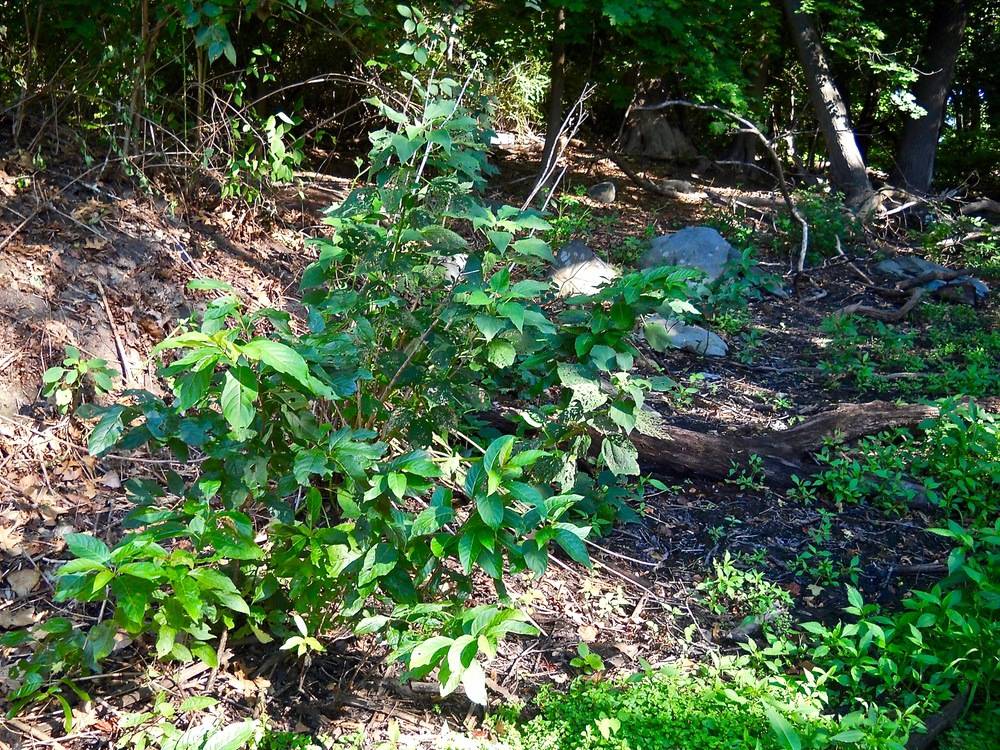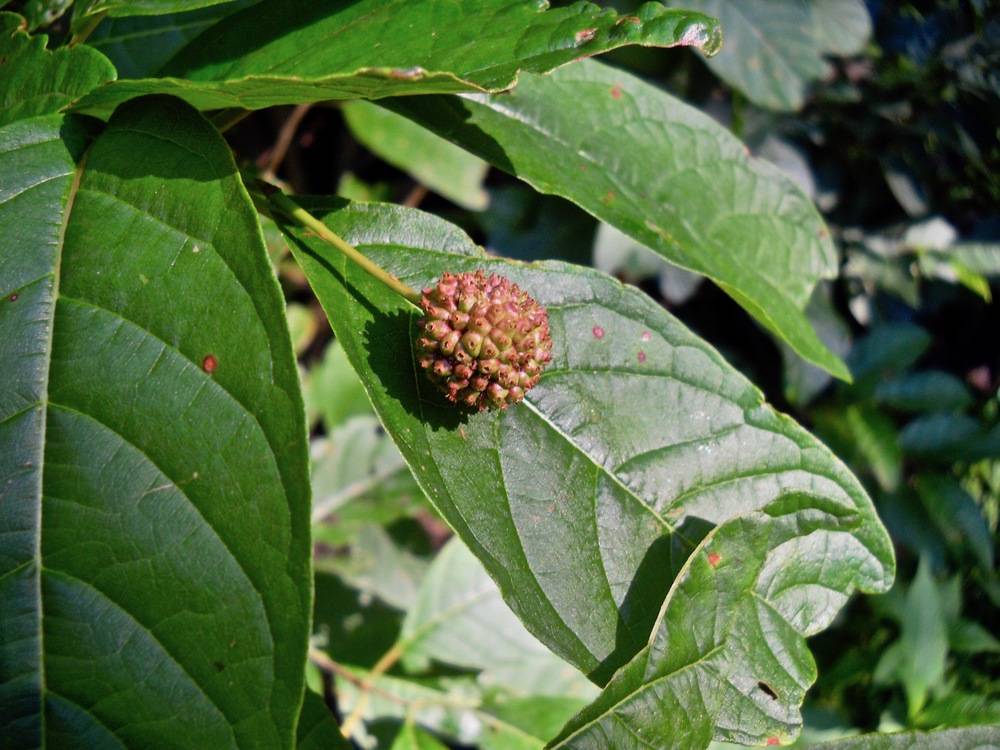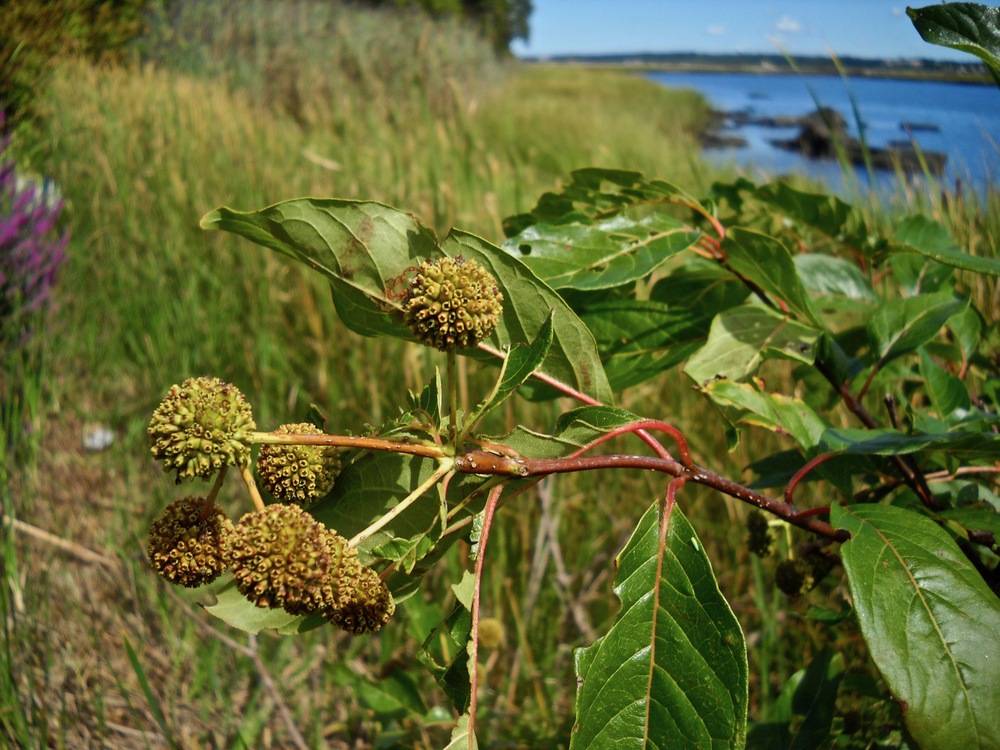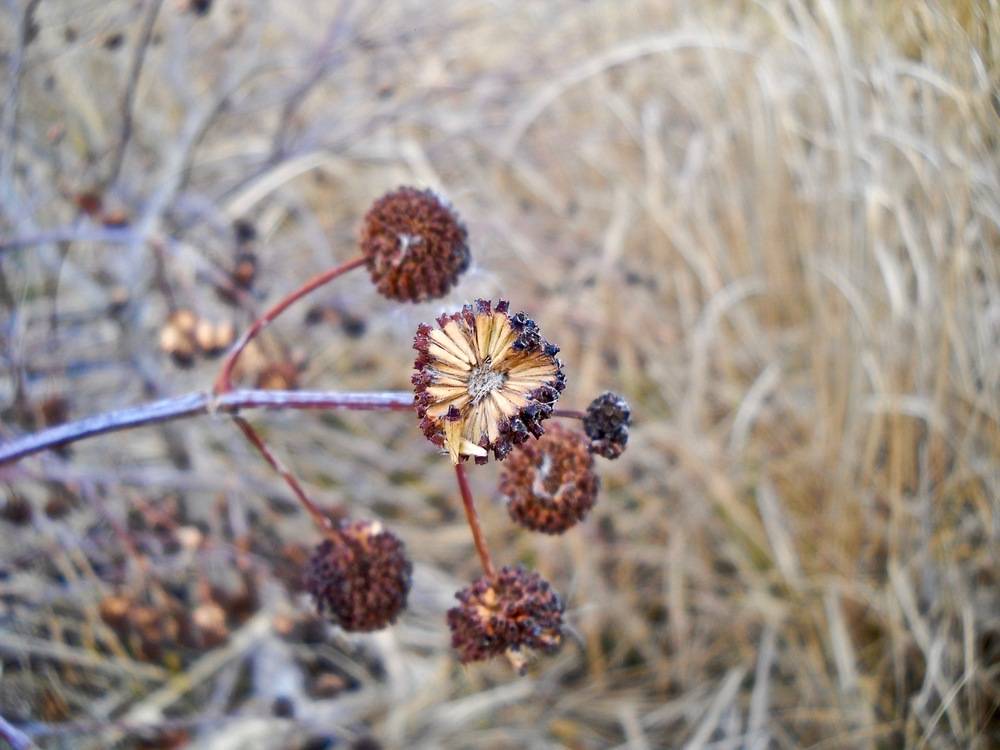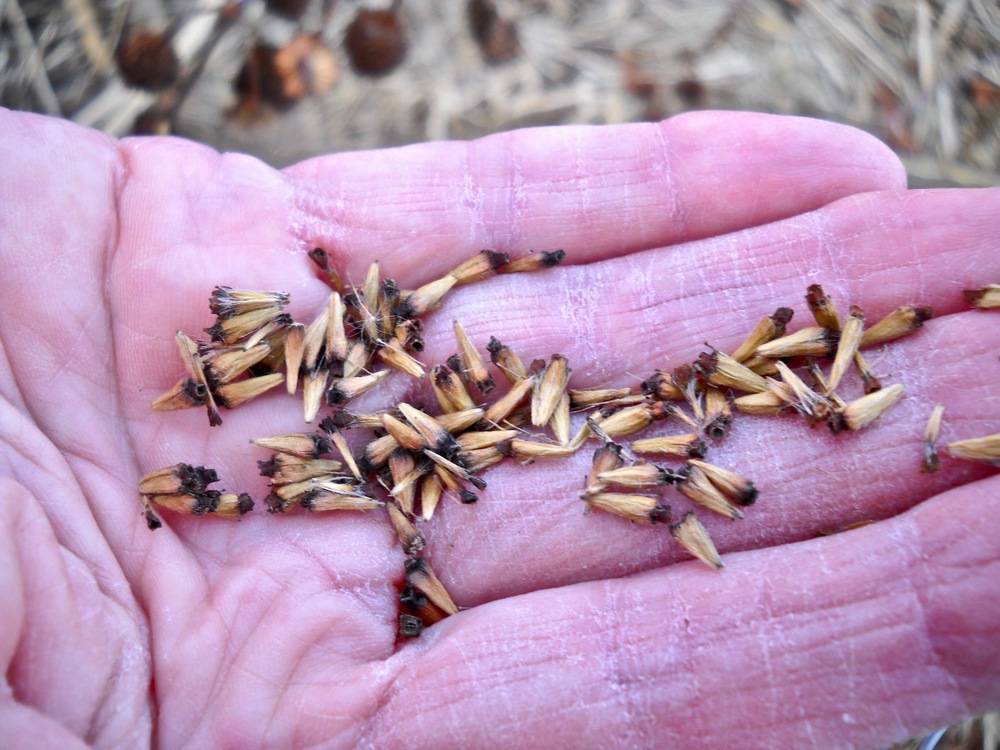common buttonbush
The common buttonbush is a shrub or small tree in the plant family Rubiaceae which also includes coffee. It has a curiously disjunct distribution range. It is present in eastern, and southern North America, skips the midwestern, northwestern and southwestern regions, but occurs in the Central Valley of California. It is commonly found in wetland habitats such as floodplains, margins of ponds and lakes, swamps, and moist forest understory.
At Salter Grove there is a solitary but thriving individual in the brackish intertidal zone near Marsh Trail marker M10. A substantial stand also occurs at the southern end of the seasonally flooded vernal pond. The few adults at the western margin of the pond appear to be limited in stature and reproductive output by the longer duration of shade.
In full sun, the common buttonbush produces a great abundance of spherical flower heads. The long projecting styles of the tightly packed tubular flowers cause the flower heads to look like pin cushions. Swarms of insects as well as hummingbirds visit the flowers for nectar. Mallards and other waterfowl feed on the nutlike seeds that form the spherical seed heads. Browse marks on the plant growing near M10 suggest that deer may feed on the leaves, although they are known to be poisonous to livestock. Common buttonbush is grown as a garden ornamental for its showy blooms and attractiveness to bees and butterflies.
Native Americans chewed the bark to sooth toothaches or made it into a strong decoction for dysentery, or a wash for sore eyes. A decoction of the roots was mixed with honey to alleviate coughs and lung disease. It was also used as a tonic, laxative, diuretic, as well as a treatment for various venereal disorders in women and men. It is likely that early settlers adapted some of these practices before commercially produced medications were readily available.
The common buttonbush even has a place in California's history, but under another name. A lone buttonwillow (the local name for Cephalanthus occidentalis in California) was a landmark on the trans-Joaquin Valley trail and was used by Native Americans to mark a traditional meeting place. It subsequently also marked the site where early settlers held rodeos. This particular plant, in the form of a small tree, has been listed as California Historical Landmark No. 492 and is now known as the Buttonwillow Tree. There is even a town named Buttonwillow in the Jaoquin Valley.
For more information:
https://gobotany.nativeplanttrust.org/species/cephalanthus/occidentalis/?pile=woody-angiosperms
http://www.missouribotanicalgarden.org/PlantFinder/PlantFinderDetails.aspx?kempercode=g830
https://en.wikipedia.org/wiki/Cephalanthus_occidentalis
http://naeb.brit.org/uses/search/?string=Cephalanthus+occidentalis
Coon, N. (1979). Using Plants for Healing. Rodale Press. p. 214.
Millspaugh, C.F. (1974). American Medicinal Plants. Dover Publications, Inc. pp. 299-301. (Original work published in 1892)

